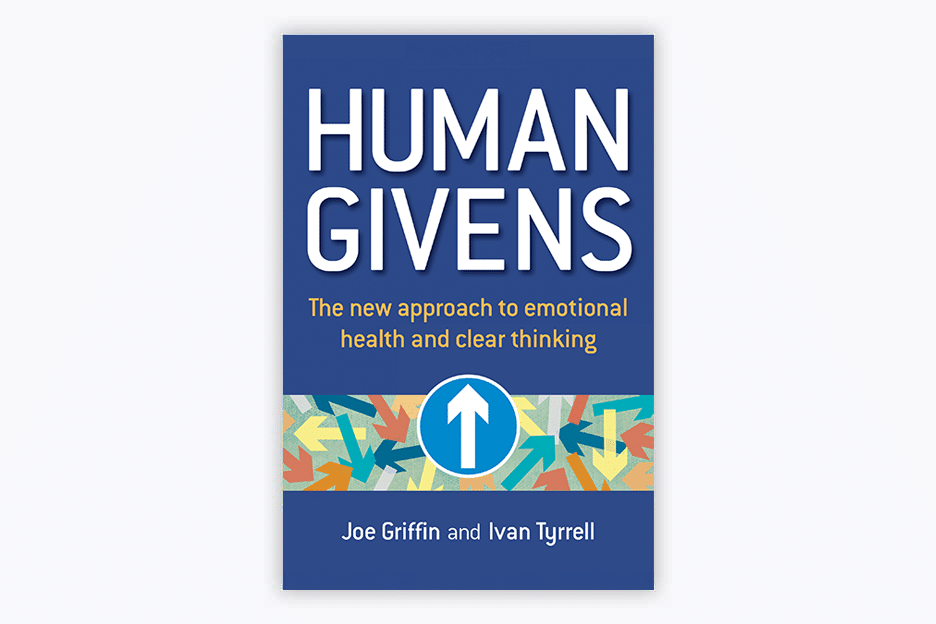Foundations of the approach
The human givens approach is a set of organising ideas that provides a holistic, scientific framework for understanding the way that individuals and society work.
This framework encompasses the latest scientific understandings from neurobiology and psychology, as well as ancient wisdom and original new insights.
At its core is a highly empowering idea – that human beings, like all organic beings, come into this world with a set of needs. If those needs are met appropriately, it is not possible to be mentally ill. Perhaps no more powerful a statement could ever be made about the human condition: If people’s needs are met well enough, they won’t get depressed; they cannot have psychosis; they won’t fall into the grip of addictions.
To get our physical and emotional needs met, nature has gifted us our very own internal ‘guidance programme’ – this, together with our needs, makes up what we call the human ‘givens’. We come into the world with an instinctive knowledge of what we need and with a set of inner resources that can help us get our needs met, provided we use them properly and are living in a healthy environment.
In terms of the history of where our knowledge about human needs comes from, there has been a distinguished cast of contributors, going right back to ancient times. More recently William James, Sigmund Freud and Alfred Adler explored human needs, and there was an outstanding contribution by Abraham Maslow, the pioneer of humanistic psychology, who first talked about a hierarchy of needs.1
It was Abraham Maslow who introduced the idea that, until basic needs are met, people can’t engage with questions of meaning and spirituality – what he calls self-actualisation.
Another contributor was William Glasser, who put forward the idea that fulfilment of people’s needs for control, power, achievement and intimacy depends on their ability to behave responsibly and conscientiously; he argued vehemently that mental illness springs from these needs not being met.2 So the human givens approach belongs to no specific people, certainly not exclusively to its co-founders Joe Griffin and Ivan Tyrrell, as Griffin stated 20 years ago: “although we may have named it; it belongs to the human species. We are just talking more precisely about what nature has gifted us, and there have been many great contributors down the millennia and the centuries, who have contributed to our understanding of the human givens.
“What we have started to do, in what has come to be called the human givens approach, is look at human needs in the light of increasing knowledge and recent discoveries that flesh them out, so that we can define them and concretise them and make them more real. We now know that having meaning and purpose, a sense of volition and control, being needed by others, having intimate connections and wider social connections, status, appropriate giving and receiving of attention etc, are crucial for health and well-being. (Attention needs weren’t understood in Western psychology at all, before the contribution of Idries Shah.) So, on one side of the equation, we now have a much fuller understanding of human needs.
“And, on the other side, we have our human resources — the innate guidance system. We are learning much more about how that works through neuroscience and the more we understand, the more effective we will be, for sure.”
Since it was first disseminated and taught back in 1997, this school of psychology and psychotherapy has become recognised by many as a profoundly important shift in our understanding of human functioning.
The human givens framework enables us to see where a person’s life is not working well and to tailor solutions for each individual using a combination of effective psychological interventions (as taught by the Human Givens College), education and direct practical help, as appropriate. The insights the approach brings into what we all need to live fulfilled, satisfying lives also brings clarity to the much-used phrase ‘wellbeing’ and points to concrete ways of achieving and maintaining such a state.
As a result, more and more people in the UK and overseas are recognising that the human givens approach has enormous, wide-reaching potential — not only for for reducing emotional distress, improving mental health and education, but also for stabilising the human mind, creating harmony in and between communities, bringing order to schools and colleges, and making government and administration more just and effective.
The often startling success of the approach, produced by its efficacy, adaptability and practical nature, and the new insights and models for effective therapy it encompases, is borne out too by the speed at which ‘human givens’ moved into new areas, ranging from psychotherapy, education and social work to international diplomatic relations and the corporate world of business (see the Human Givens Institute’s online archive and the book An Idea in Practice: Using the human givens approach,which was shortlisted for Mind’s Book of the year in 2008, for a wide range of examples).
And a growing body of research supports the positive experiences reported by people who use it or have been helped by it.
This highly cost-effective approach, which is highly effective at reducing the suffering caused by a wide range of mental health conditions and behavioural problems and enables people to build resilience against future setbacks, could save organisations and individuals considerable time and money if it were more widely implemented.
References
1. Maslow, A H (1971). The farther reaches of human nature. Viking, New York.
2. Glasser, W (1965). Reality theory. Harper & Row, New York.
3. Aserinsky, E and Kleitman, N (1953). Regularly occurring periods of eye mobility and concomitant phenomena during sleep. Science, 18, 273—274.





